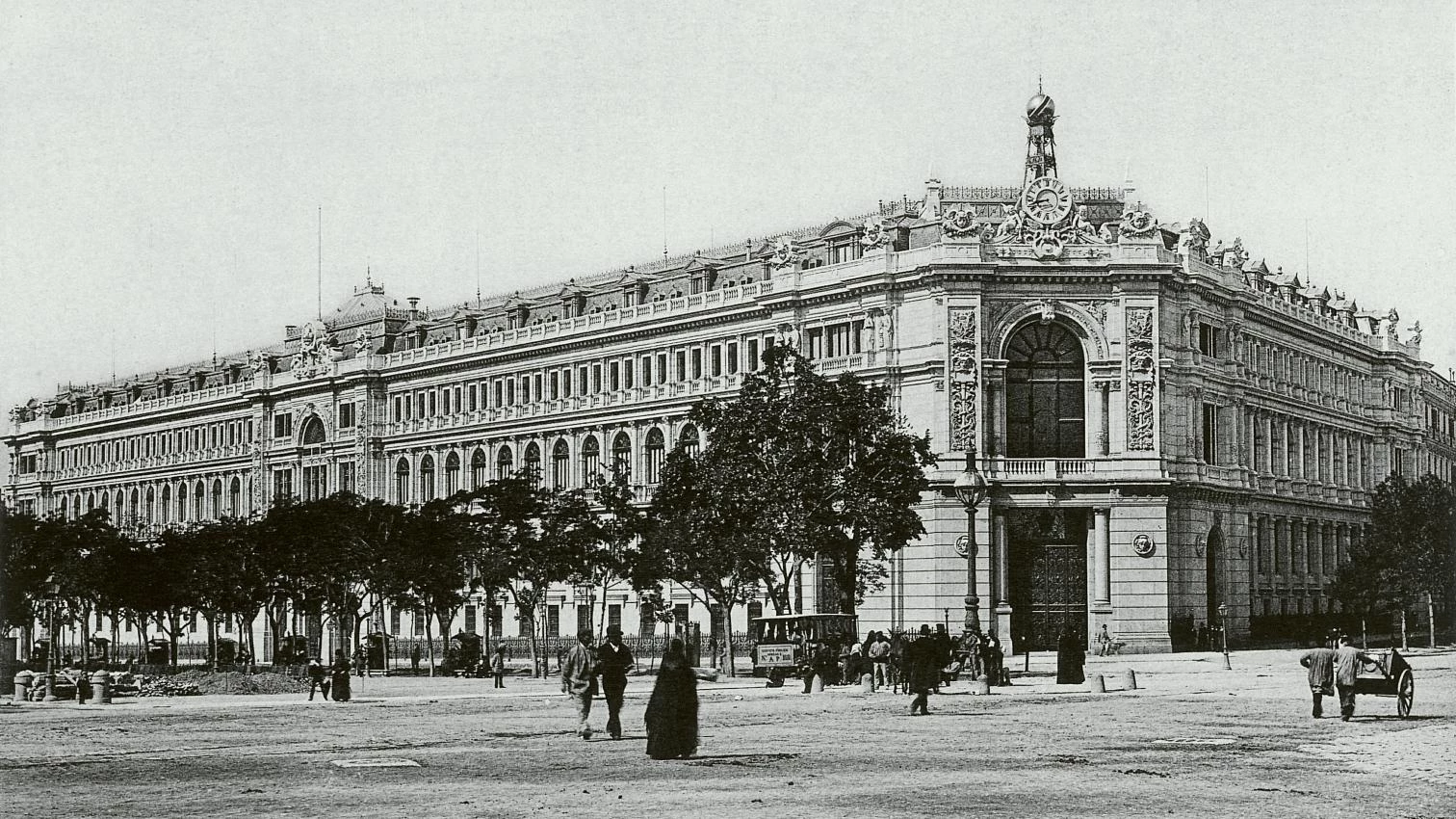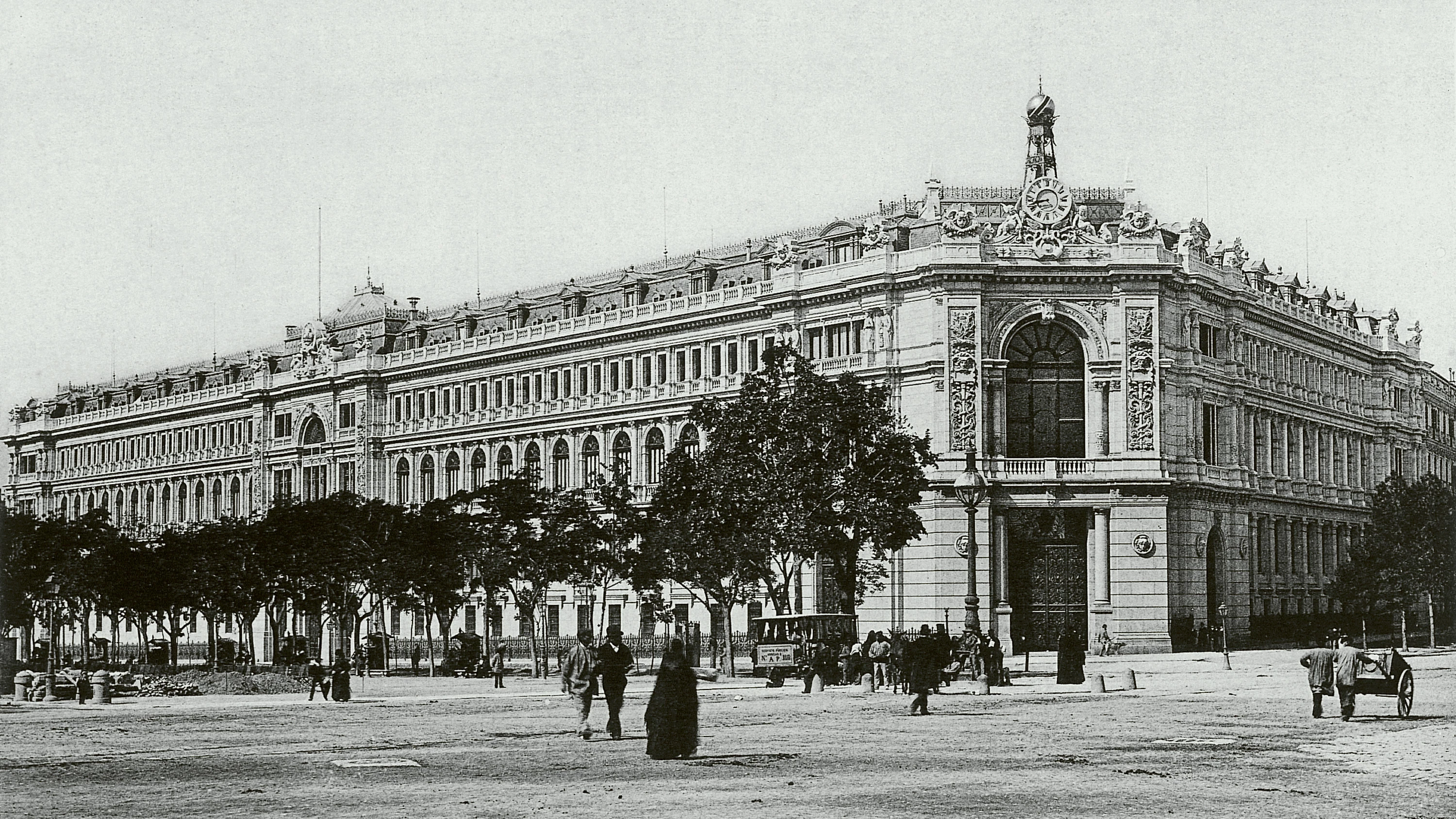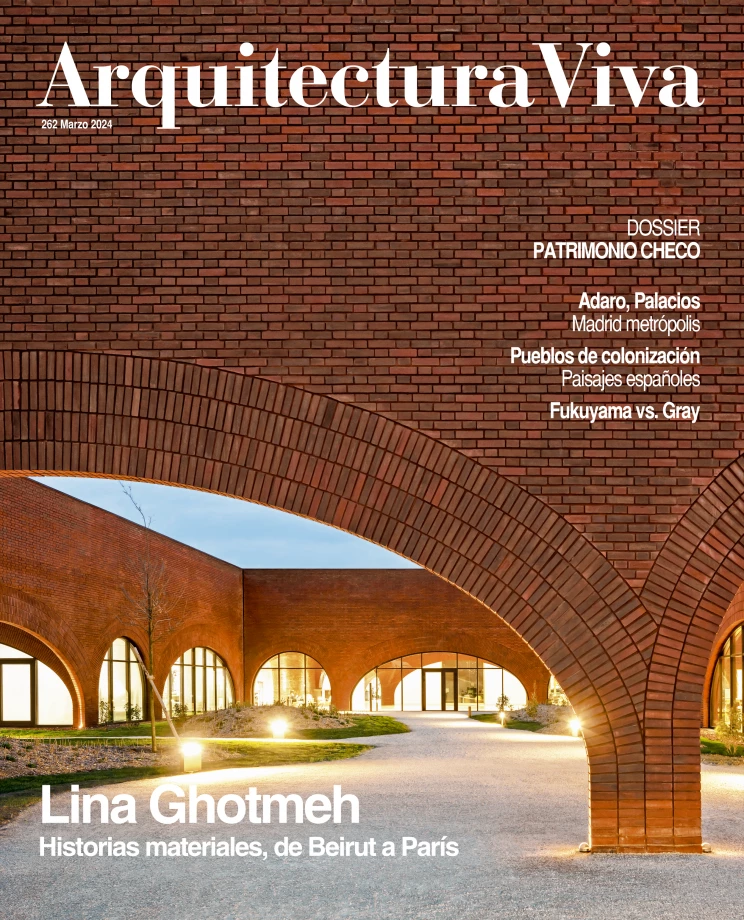
Hauser and Menet, Façade of the Banco de España a few months after its inauguration, 1891
The eclecticism that dominated Spanish architecture in the late 19th century was characterized by very free references to past styles, which were selected, combined, and adapted to the uses of buildings, the tastes of clients, and the personal interpretations of architects. This architecture, reviled in the 20th century because of its ornamental excesses, nonetheless concealed a serious pursuit of modernity, as shown by the works of Eduardo de Adaro, a leading architect of his time and one of those who most earnestly contributed to crafting a cosmopolitan image for Madrid and placing it at a par with the great European capitals...[+]






